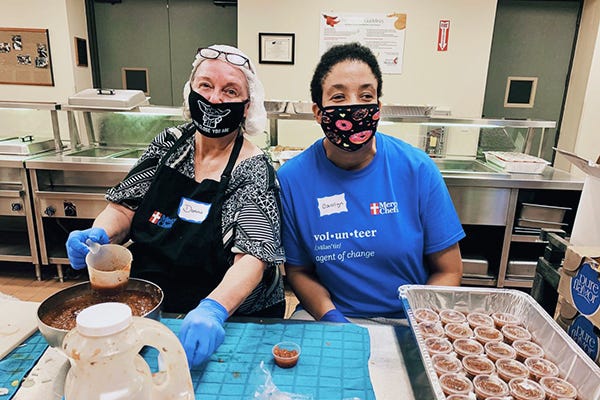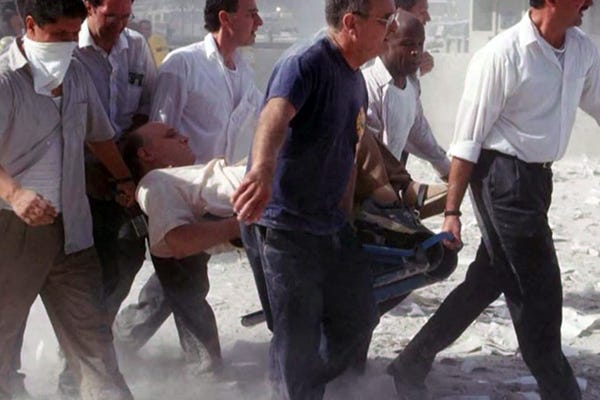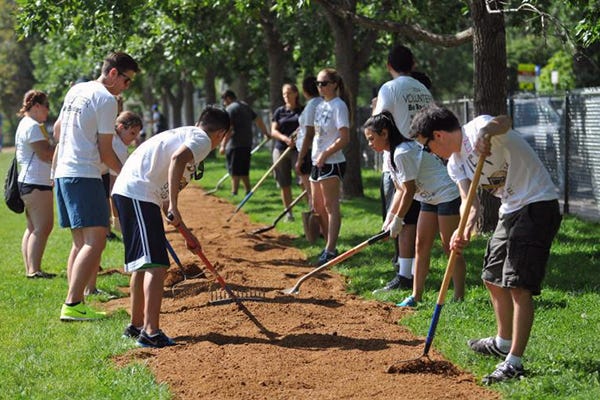Widespread fire damage on Maui killed 115 people, and hundreds are still missing. Smoke from Canadian wildfires blanketed significant U.S. cities across the country. An unrelenting heat wave in Phoenix, Arizona, and catastrophic floods in upstate New York and Vermont, are all part of the recent “new normal.” Climate disasters have always been a part of our lives, and their occurrence has been an opportunity to bring people together and bring out the best in us. With the new reality of more frequent and intense weather events, climate change will be an ongoing source of stress and struggle. It is also an opportunity to live in relation to each other in more connected and purposeful ways.
Local communities unite during catastrophes to form spontaneous lifeline structures, a participatory democracy of shared values and purpose. For example, people with transportation show up to evacuate people in fires and floods. They join existing fire departments in search and rescue efforts. They assemble impromptu networks to feed each other and to rebuild. This kind of aid is mutual rather than hierarchical, meaning that every participant is both a giver and receiver in caring acts that bind people together.
In her book A Paradise Built in Hell: The Extraordinary Communities That Arise in Disaster , Rebecca Solnit shares disaster stories over the past century in which people rose to the occasion in hopeful and inspiring ways. She shows compelling evidence that responses during disasters demonstrate what is always latent: Our resilience and generosity.
Whether it’s the 1906 San Francisco earthquake, the 1940 Blitz in World War II England, the 1985 earthquake in Mexico City, or 9/11 in New York City when the Twin Towers came down, everyday citizens showed tremendous resourcefulness in helping each other. These communities often formed early on while the established emergency response systems were overwhelmed or inadequate. People who never met collaborated, strangers became friends, food and goods were shared freely, and the old divides between people seemed to matter very little. At these times, money was of little use, and relationships mattered more than materiality. There were many firsthand reports of people feeling enlivened, calm, and even joyful amidst tremendous hardships and suffering.
Holocaust survivor and psychiatrist Viktor Frankl said, "In some ways, suffering ceases to be suffering at the moment it finds a meaning, such as the meaning of sacrifice."
Of course, there are different kinds of responses during disasters, and not all are altruistic. But Solnit convincingly shows how the more common response is cooperation and care, clearly evidenced by disaster sociologist research. Instead of chaos, everyday people often work together effectively in relative calm. Unfortunately, this is not often what is conveyed publicly and in the media after a catastrophe occurs.
Solnit states that there is often elite and bureaucratic panic by those who don't see communities' potential. There are examples of people in authority turning away offers of help, even seeing them as antagonistic. People who could be of service have been marginalized or even harmed. For example, in the wake of New Orleans's Hurricane Katrina, the Federal Emergency Management Agency was turning away volunteer rescuers, buses, and truckloads of supplies as desperate people waited for buses that never came. This kind of top-down response sometimes comes from misunderstanding or a feeling that an authority’s position may be threatened, or worse, from valuing protecting possessions over human life.
Too often, the media goes along with the mainstream hierarchical narrative about catastrophe, sharing skewed versions of who the helpers are, feeding heroic stereotypes, and missing the more hopeful, accurate, and bigger picture. People amid disasters can be viewed as traumatized victims rather than resilient community members who meet the situation from a place of strength.
The volunteers that show up in times of disaster are evidence that latent energy will unleash altruism, tremendous resourcefulness, and a strong desire to be there for each other – in ways that aren't as evident in daily life with its commitments and concerns.
It is not only possible to prepare ourselves physically and psychically to vibrantly live in a world that will continue to have climate events that wreak havoc, but we can do so in a way that gives life meaning. We do this by shifting our mindset, focusing on our neighbors, and experiencing ourselves as active agents in the new normal. We can live in connection and joy even in stressful circumstances that won't abate.
Community identity is fed during a disaster, but we must choose and prepare for the nature of the community we wish to create. Whether it’s one of vibrancy and abundance or toxic separateness and scarcity, the choice is ours. Our response tendencies to disaster can manifest on a spectrum: Solidarity and connection, or conflict and isolation, depending partly on the values we choose to live by.
Next week's essay will continue this thread as I share thoughts and practices for shifting mindsets towards the potentially existential threat that is climate change. How can we live intentionally with what is, even when that scares us, in connection with others and with a sense of purpose?







